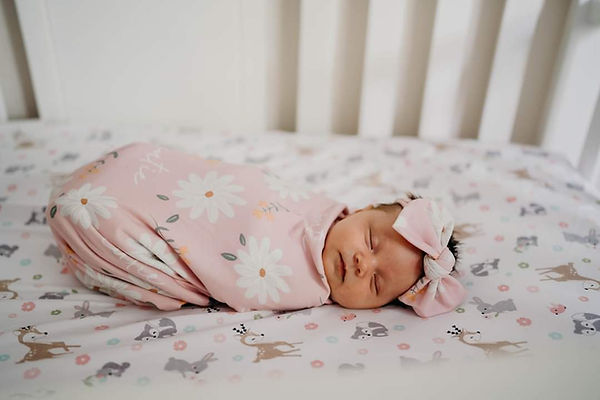The Ultimate Guide to Traveling with a Baby: Sleep Consultant-Approved Tips for Planes, Cars & Time Zones
- Brittney Koleszarik

- May 28
- 4 min read

Whether you’re visiting family or heading off on a much-needed vacation, traveling with a baby can feel daunting—especially when you’re trying to maintain healthy sleep habits. As a pediatric sleep consultant, I’ve helped many families plan trips that support restful sleep (for babies and parents). In this comprehensive guide, I’ll share my best tips for traveling with a baby—by plane and car—including how to time naps, navigate time zone changes, and arrive with your sanity intact.
✈️ Air Travel with a Baby: Short & Long Flights
🕒 How to Time Flights with Naps
Short Flights (Under 3 Hours):
Aim for a takeoff right before nap time. This way, your baby may fall asleep with the motion and white noise of the plane.
Feed or offer a pacifier during takeoff and landing to reduce ear pressure.
Use a baby carrier to help soothe your baby to sleep during the flight if you're not using a separate seat with a car seat.
Long Flights (3+ Hours or Overnight):
Try to mimic your baby’s usual nap schedule. If it’s a daytime flight, plan some awake time before boarding to increase sleep pressure.
Consider an overnight (“red-eye”) flight if your baby is a good nighttime sleeper—you may get a stretch of consolidated sleep in the air.
Bring a familiar sleep cue like a lightweight blanket, sound machine app, or small lovey (if your baby is over 12 months).
👜 Airplane Packing Tips for Sleep Success:
Change of clothes (for both baby and parent)
Diapers, wipes, and a changing pad
Two pacifiers (if used) in case one drops
Bottle or nursing cover (feeding during takeoff is soothing)
Travel white noise machine or phone with white noise app
Ziplock bags for soiled clothes
Swaddle or sleep sack if your baby uses one
A few quiet toys or books
✈️ Bonus Tip:
Book a window seat if your baby will be on your lap—it gives you more privacy for nursing or bottle feeding and fewer distractions. For longer flights, consider purchasing a seat for your baby and bringing your FAA-approved car seat for safer and more restful sleep.
🚗 Road Trips with a Baby: Planning for Long Car Rides
Car rides can be more flexible than flying, but they still need a plan if you want to protect naps and nighttime sleep.
🛣️ Nap Timing on the Road:
Leave shortly before nap time so your baby can fall asleep with the car motion.
Try to limit one nap per day in the car if your baby is over 4 months old and you’re actively sleep training. Sleep quality is often lighter in motion than in a crib.
If you're doing a long drive, take breaks during wake windows to let your baby stretch, play, and reset.
🚙 Other Car Travel Tips:
Use a clip-on car shade to darken the seat area and reduce stimulation.
Bring a portable sound machine to mimic crib sleep cues.
Pack a cooler bag with milk or formula and age-appropriate snacks.
Plan overnight stops if the drive is more than 8 hours—babies need a full reset at night.
Use a mirror (only if it doesn’t overstimulate your baby) to keep an eye on them from the front seat.
🕰️ Navigating Time Zone Changes with a Baby
Traveling across time zones can disrupt sleep, but with a gentle approach, your baby can adjust smoothly.
If You’re Traveling Across 1–2 Time Zones:
Stay on “home time” if the trip is short (less than 3 days). You may just need to shift daily activities slightly.
If the trip is longer, adjust your baby’s schedule by 15–30 minutes per day leading up to the trip, moving wake times, naps, and bedtime in the direction of the new time zone.
If You’re Crossing 3+ Time Zones:
Start shifting the schedule a few days before your trip.
Example: If flying east (earlier time), wake your baby a little earlier each day.
Get outside in the morning at your destination to help reset your baby’s circadian rhythm.
Cap naps to protect nighttime sleep, even if your baby seems extra tired from travel.
💤 General Travel Sleep Tips from a Sleep Consultant
Stick to your bedtime routine (even if it’s abbreviated). Familiar steps like a bath, book, and lullaby are powerful sleep cues—even in new environments.
Bring your sleep gear. A travel crib or Pack ‘n Play, white noise machine, favorite pajamas, and lovey can make an unfamiliar space feel safe.
Don’t stress if things get off track. One or two “off” days won’t ruin your baby’s sleep forever. Get back on routine as soon as possible.
Allow a few days for full adjustment. If your baby is overtired after travel, prioritize early bedtimes and limit new activities until they’re back on track.
🌙 Final Word
Traveling with a baby doesn’t have to mean sleepless nights and endless meltdowns. With a little planning and some flexibility, you can enjoy your trip and protect your baby’s sleep. If you're unsure how to apply these tips to your baby’s unique routine, working with a pediatric sleep consultant before your trip can make a huge difference.
Need personalized travel prep help? Reach out to book a pre-travel sleep consultation—I’d love to support your family’s journey.









Comments